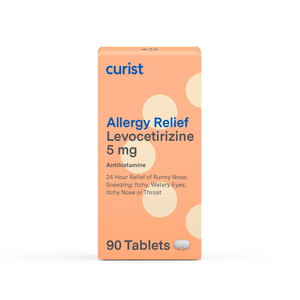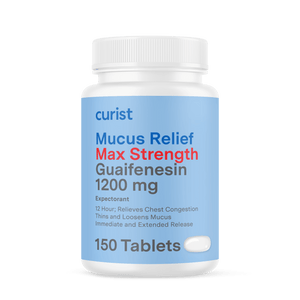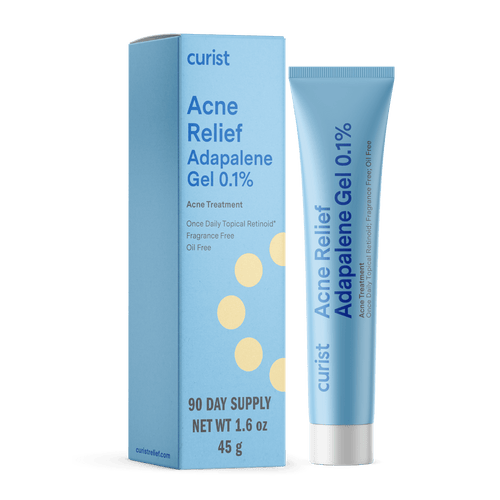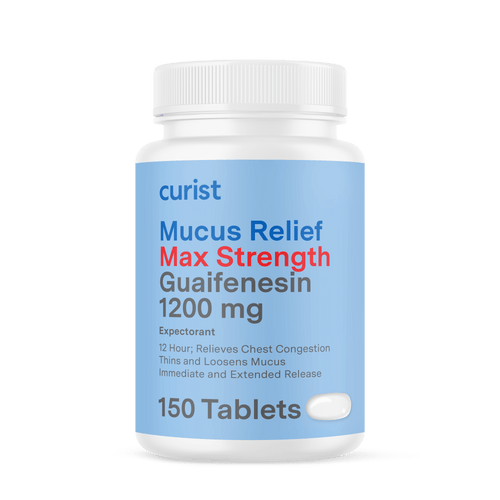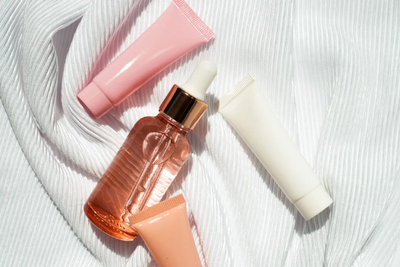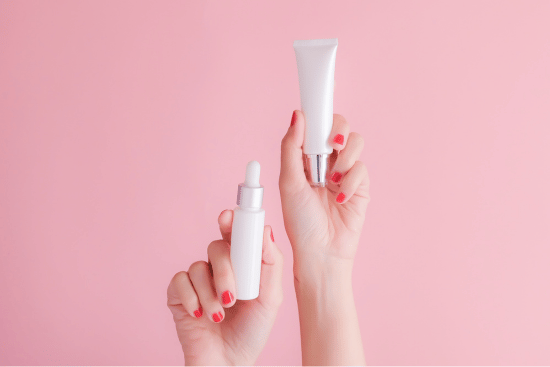
By Dr. Allison Dinh, PharmD, Curist Pharmacy Advisor
Curist delivers over-the-counter medicines to your door at a fraction of the price of traditional brands. We hope everyone stays safe and healthy during this time.
If someone were to ask you to name a few skincare ingredients, adapalene may be one of the first to come to mind. Azelaic acid, on the other hand, usually is not a part of that initial list. Let’s change that!
What is Azelaic Acid?
Azelaic acid is an acid that exists naturally in grains and can be found on your skin as well due to the result of production by yeast. Azelaic acid has comedolytic and exfoliating properties which are great for preventing blackheads from forming. Azelaic acid is available over-the-counter and by prescription in 15% and 20% formulations. Additionally, azelaic acid can come in a cream, gel, or foam. You have many options when it comes to azelaic acid!
Is Azelaic Acid a Topical Retinoid?
Azelaic acid is not a topical retinoid. In fact, azelaic acid is not a retinoid at all! Azelaic acid is a dicarboxylic acid which is an organic compound that contains two carboxyl groups, hence the “dicarboxylic” part of the name.
In contrast, retinoids are vitamin-A derivatives such as adapalene, tretinoin, and retinol (see our Adapalene vs Retinol and Adapalene vs Tretinoin vs Benzoyl Peroxide vs Retinol articles to learn more!).
What is Azelaic Acid Used For?
Due to its ability to prevent clogged pores, promote cell turnover through gentle exfoliation, and reducing inflammation, azelaic acid is great for treating acne and rosacea. In comparison to acne, which can be characterized by blackheads or pustules, rosacea looks more akin to a sunburn on the face–red and littered with small bumps.
How Does Azelaic Acid Work?
Azelaic acid works through antibacterial properties – in other words, it kills bacteria! This stops acne-causing bacteria from forming unwanted pimples. Azelaic acid also promotes exfoliation which helps clear skin and prevent acne. Its anti-inflammatory effects help with rosacea by reducing reactive oxygen species, which are unstable chemicals that damage DNA.
What are the Side Effects of Azelaic Acid?
Common side effects of azelaic acid include a tingling sensation when applied to the skin, peeling at sites of application, and also some dryness. If more serious adverse reactions occur such as difficulty swallowing or breathing, hives, or facial swelling, these are signs of an allergic reaction, and you should seek medical attention immediately. Fortunately, these serious reactions are very rare.
How Do I Use Azelaic Acid?
Before using azelaic acid on your face, make sure to cleanse it and pat it dry. Then, take a pea-sized amount of the azelaic acid gel, cream, or foam and apply it to the face in a thin layer. This seems like a small amount, but less is more!
If you are wearing multiple products on your face, make sure to apply azelaic acid after toner or essence but before sunscreen which should be last. When it comes to moisturizer, you can choose to either apply azelaic acid before or after.
Azelaic acid can be applied up to twice a day. When you first incorporate it into your skincare routine, be sure to start slow to minimize irritation. Try putting it on once a day a few times per week and then steadily increasing the frequency over time up to twice per day.
Is Adapalene Stronger than Azelaic Acid? Is Azelaic Acid Stronger than Adapalene?
The answer to which of adapalene or azelaic acid is stronger depends on how you define the word “stronger” in this sense. Overall, azelaic acid is gentler than adapalene and generally cannot be used for more serious skin conditions such as cystic acne. However, one study concluded that azelaic acid 15% gel was “noninferior” to adapalene 0.1% gel in the treatment of adult acne in females. This means that those two particular formulations, azelaic acid 15% gel and adapalene 0.1% gel, had about the same level of effectiveness.
Adapalene 0.1% gel is available without a doctor’s prescription here.
Can I Use Adapalene and Azelaic Acid Together?
Yes, you can use adapalene and azelaic acid together. The combination of azelaic acid and adapalene can even be a powerful duo for combating acne. However, other ingredients such as alpha hydroxy acids (AHAs) and salicylic acid should not be mixed with either adapalene or azelaic acid.
Before making large changes to your skincare routine, it is helpful to consult a dermatologist first in order to optimize your plan and prevent irritating your skin. If you are considering adding adapalene to your skin care routine, checkout Curist Acne Relief.
Who Should Not Use Adapalene or Azelaic Acid?
Azelaic acid is generally well-tolerated. In fact, it is one of the few skincare ingredients that can be continued throughout pregnancy! In contrast, adapalene must be stopped if someone is pregnant or trying to become pregnant due to the potential risk to the developing fetus.
For breastfeeding mothers, it is best to exercise caution when using azelaic acid or adapalene since it is inconclusive whether they would enter the milk since there are limited studies in this area. It would be wise to avoid their usage to stay on the safer side.




